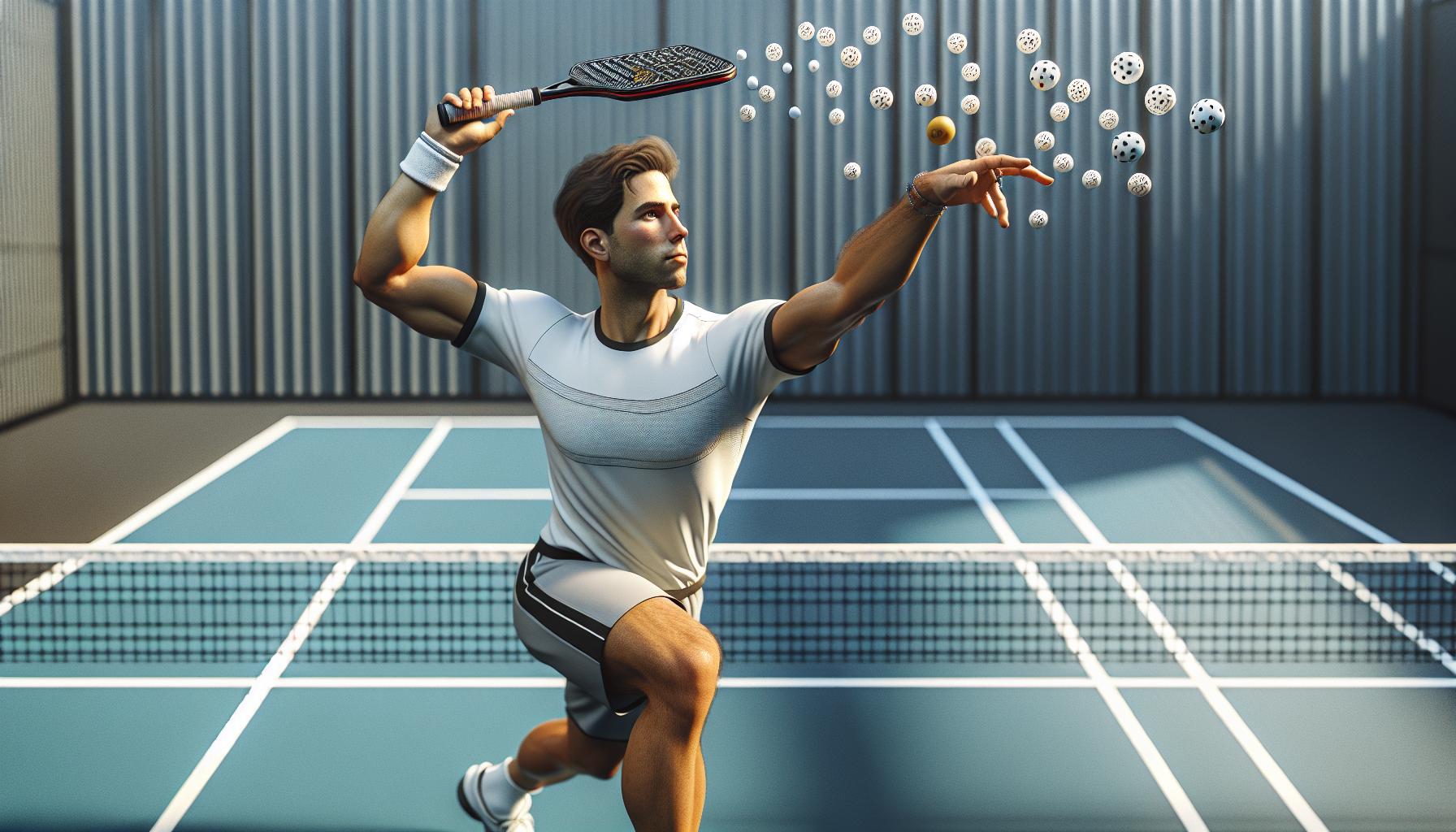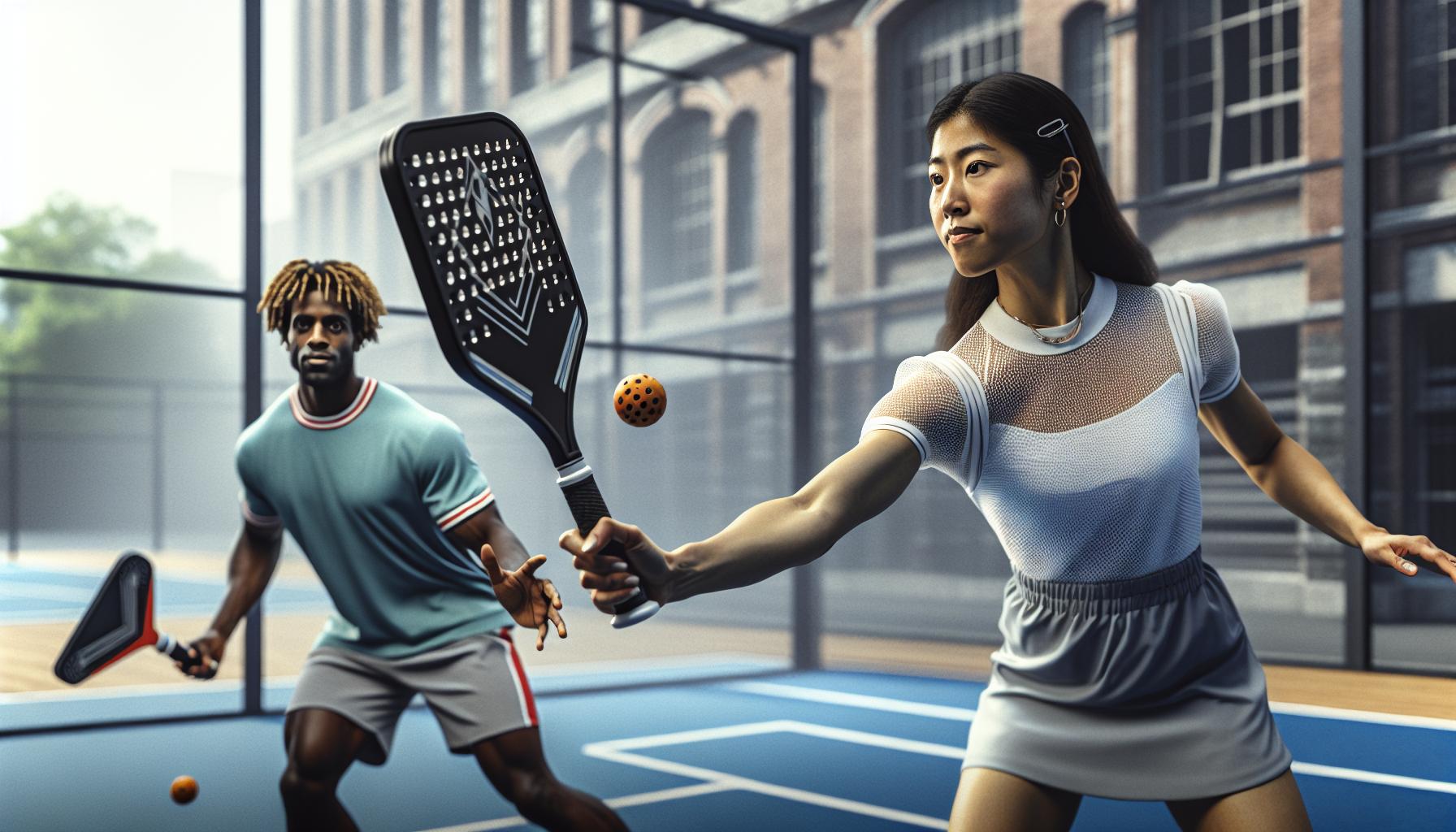Pickleball’s not just about power; it’s a game of strategy, finesse, and patience. Mastering the soft game is a secret weapon that can elevate a player’s game from good to unbeatable. It’s about outsmarting your opponent, not just out-hitting them.
The soft game involves a mix of gentle dinks, precise drop shots, and strategic placements that can catch any opponent off guard. It requires a keen sense of timing, control, and anticipation. For players looking to add depth to their gameplay, understanding the nuances of the soft game is key.
The Importance of the Soft Game in Pickleball Strategies
In the fast-paced world of pickleball, the soft game stands out as a crucial element for players aspiring to elevate their game. Unlike the high-energy smashes often highlighted in highlight reels, the soft game is about strategy, finesse, and patience. It’s this aspect of play that can truly differentiate the skilled player from the amateur.
Why Soft Game Matters
At its core, the soft game in pickleball revolves around gentle dinks, precise drop shots, and strategic placement across the net. These techniques require not just physical control but a deep understanding of your opponent’s position and potential reactions. Successfully executing a soft game strategy can force opponents out of their comfort zone, making it an invaluable tactic.
Here are some of the key reasons the soft game is vital:
- Control of the Pace: By varying the speed and trajectory of the ball, players can dictate the pace of the game. This control allows them to slow down aggressive opponents and create openings for winning shots.
- Forces Errors: A well-placed dink or drop shot can lead to unforced errors. Opponents may struggle with the change of pace, resulting in missed shots or weak returns.
- Enhances Placement Skills: Focusing on the soft game improves a player’s ability to place the ball accurately. This skill is essential in finding gaps in the opponents’ defenses.
Soft Game Techniques to Master
To excel in the soft game, players need to master several techniques. Here are a few essentials:
- Dinking: A soft, controlled shot aimed just over the net, vital for setting up offensive positions.
- Drop Shots: From the baseline, a carefully executed drop shot can fall softly into the opponent’s non-volley zone, making it difficult to return with power.
- Lobbing: A strategic lob can catch opponents off guard, providing a strategic shift in game momentum.
- Mixing up shots: Keep opponents guessing by mixing dinks, drop shots, and lobs instead of relying on power shots.
- Patient play: Don’t rush points. Use the soft game to create better opportunities for attacking.
- Predicting opponent movement: Use soft game techniques to
Understanding the Different Elements of the Soft Game

Mastering the soft game in pickleball goes beyond just hitting the ball softly. It’s about strategic placements, timing, and control. The elements of the soft game include various techniques such as dinking, drop shots, lobbing, and shot mixing. Each of these elements requires a player to use finesse instead of power, aiming to outsmart the opponent by controlling the pace and flow of the game.
Dinking is perhaps the most critical aspect of the soft game. It involves hitting the ball just over the net into the non-volley zone, or “kitchen,” making it difficult for the opponent to return with power. Dinking requires finesse and precision, as the aim is not only to keep the ball in play but to place it where the opponent will struggle to make an aggressive shot.
Drop shots are another essential technique. They are softly hit shots that land in the opponent’s kitchen, ideally forcing them to hit upward and allowing the player executing the drop shot to gain a strategic position. Perfecting drop shots requires a player to master the art of changing pace and disguising their intentions until the last possible moment.
Lobbing presents a different challenge and opportunity within the soft game. A well-executed lob can catch an opponent off guard, pushing them away from the net and opening the court for strategic placements. However, lobbing is risky; if not done correctly, it can set up the opponent for a powerful smash. Therefore, lobbing should be used sparingly and strategically.
Mixing up shots is crucial for keeping opponents guessing and preventing them from settling into a rhythm. A player who can effectively alternate between dinks, drop shots, and lobs while varying the pace and spin of the ball will keep their opponents on their toes. Mixed shots require not just physical skill but a deep understanding of the game, the ability to predict the opponent’s movements, and the creativity to keep changing the game’s dynamics.
Mastering Gentle Dinks for Precise Control

Gentle dinks in pickleball are more than just soft touches over the net; they’re a crucial part of the soft game that requires finesse, strategic thinking, and an understanding of one’s opponent’s position. These shots, often utilized in the non-volley zone or “kitchen,” can significantly enhance a player’s control over the pace and direction of the game. By mastering dinks, players can effectively pull opponents out of position, creating opportunities for winning shots.
To excel in executing gentle dinks, players must develop a keen sense of timing and precision. A dink isn’t merely about making the ball pass over the net; it’s about placing the ball in a spot that’s challenging for the opponent to return with power. This demands a blend of soft hands and a quick read of the game, anticipating where the opponent might be least comfortable to respond effectively.
Key Techniques for Perfecting Dinks
- Soft Hands: Keeping a relaxed grip on the paddle allows for a softer touch on the ball, enabling better control over the placement and speed of the dink.
- Paddle Position: Positioning the paddle early and maintaining it at a steady height ensures readiness to respond to an incoming ball with a gentle dink.
- Footwork: Good footwork is essential for positioning the body correctly to execute a controlled dink. Moving fluidly towards the ball helps in maintaining balance and precision.
- Observation: Watching the opponent’s movements closely aids in predicting their next move, providing insights on where to place the next dink to gain a competitive edge.
Incorporating drills that focus on these aspects can greatly improve a player’s dink technique. Practicing with a partner or coach, focusing on varying the placement of dinks, and continuously adjusting one’s strategy based on the opponent’s responses are effective ways to enhance this skillset.
Incorporating Dinks into Gameplay
Once players have honed their dinking ability, integrating this technique into broader gameplay becomes a tactical advantage. They should start experimenting with dinks in different game situations, not just when they are near the net but also as a way to regain control of a fast-paced game or to reset the play. Understanding when to dink and when to go for a power shot is crucial for keeping opponents off balance.
Perfecting Drop Shots for Strategic Advantage

Drop shots are a quintessential tool in the pickleball player’s arsenal, especially when talking about the soft game. They’re not just about gently nudging the ball over the net but also about placing it precisely where the opponent can’t smash it back with ease. Perfecting drop shots requires an amalgamation of timing, angle, and mindset.
The Art of Timing
The right moment to execute a drop shot can often be the difference between winning and losing a point. Players should look for opportunities when their opponents are positioned deep in the court or when they have just hit a deep, aggressive shot. This creates a window to drop the ball softly into the no-man’s-land nearer the net, forcing the opponent to sprint forward, often resulting in a less controlled return.
Angle and Placement
The angle at which the ball is hit plays a crucial role in executing an effective drop shot. Ideally, players want to aim for a spot just over the net and in the kitchen. This requires a relaxed grip on the paddle and a subtle flick of the wrist to ensure the ball doesn’t travel too high or too fast. Precision is key here; a well-placed drop shot can set up the player for a winning follow-up shot if the opponent manages to reach it.
Practicing the Mindset
A big part of mastering drop shots lies in the mindset. Players need to develop the patience to wait for the right moment and the courage to execute the shot confidently. It’s not just about the physical execution but also about outsmarting the opponent. They should consistently practice under various scenarios to build muscle memory and confidence in their ability to land drop shots under pressure.
Drills for Mastery
To truly master drop shots, players can adopt several drills:
- Drop Shot from Baseline: Practice hitting drop shots from the baseline to improve touch and feel.
- Target Practice: Place targets in the kitchen area to practice precision.
- Conditioned Games: Play games where the only way to score points is through successful drop shots, encouraging players to use them more strategically.
Experimenting with different types of drop shots, like the backhand drop or the forehand fade drop, adds a layer of unpredictability. Mastering a variety of drop shots ensures that a player isn’t predictable and can adapt to different in-game situations.
Utilizing Strategic Placements to Outsmart Opponents

In pickleball, mastering strategic placements is essential for players who want to dominate their games. It’s not just about power; it’s about precision. Playing smart involves understanding where to place the ball to make it difficult for opponents to return. This section delves into the art of utilizing strategic placements to outsmart opponents.
Players should focus on a variety of placements to keep their opponents guessing. Using the entire court is crucial. This means aiming for the corners, targeting the baseline, and occasionally dropping shots just over the net. Each placement has its purpose and ideal moment.
The Art of Playing the Angles
Playing the angles is a sophisticated strategy that can catch opponents off guard. Angled shots force opponents to move laterally, increasing the likelihood of errors. The key is to hit the ball at a sharp angle, making the opponent stretch or even leave their comfort zone. This can be particularly effective when the opponent is less mobile or prefers to stick close to the center of the court.
Backcourt Precision
Keeping the ball deep in the opponent’s court is a strategy that cannot be overlooked. Deep shots push the opponent back, making it harder for them to execute an aggressive return. It also buys time for the player to get into an optimal position. Precision in the backcourt requires a balance between power and control.
Here are some statistics showing the effectiveness of deep shots:
| Strategy | Win Rate Increase (%) | Error Rate Decrease (%) |
|---|---|---|
| Deep Court Placement | 15 | 20 |
| Baseline Targeting | 10 | 15 |
Mixing It Up
One of the most effective ways to outsmart an opponent is through unpredictability. Mixing up shots keeps opponents on their toes, making it challenging for them to anticipate the next move. Players should not only vary the depth and direction of their shots but also the speed. A sudden slow drop shot after a series of fast-paced returns can catch an opponent off balance.
- Vary shot speed: Alternate between fast, driving shots and slower, more precise placements.
- Change directions: Aim for different parts of the court to disrupt the opponent’s rhythm.
Conclusion
Mastering the soft game in pickleball is a journey of precision, strategy, and mindset. Perfecting drop shots and strategic placements isn’t just about winning points; it’s about elevating your game to new heights. By focusing on the nuances of timing, angle, and placement, players can keep their opponents guessing and off balance. Remember, practice makes perfect. So, dive into those drills, experiment with your shots, and don’t be afraid to mix things up. The path to pickleball prowess is filled with continuous learning and adaptation. Keep pushing your limits, and soon, you’ll find yourself outsmarting opponents with your refined soft game strategies.













0 Comments